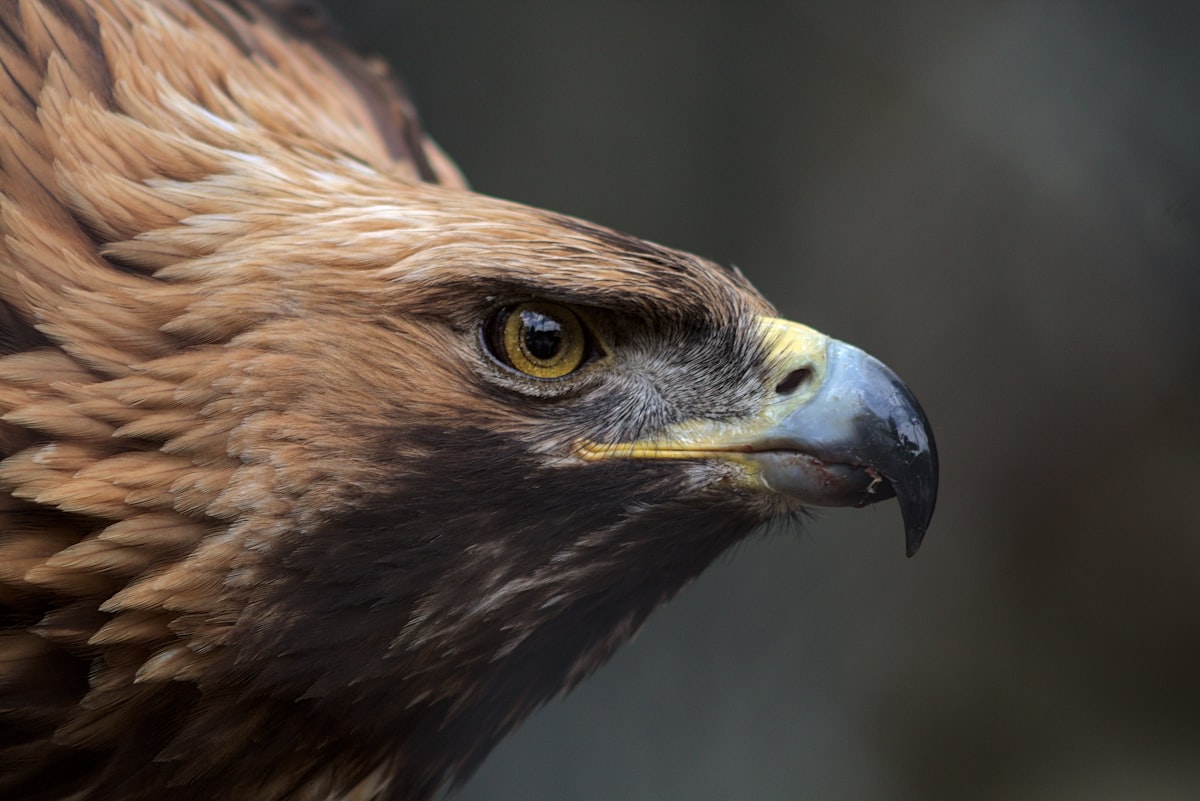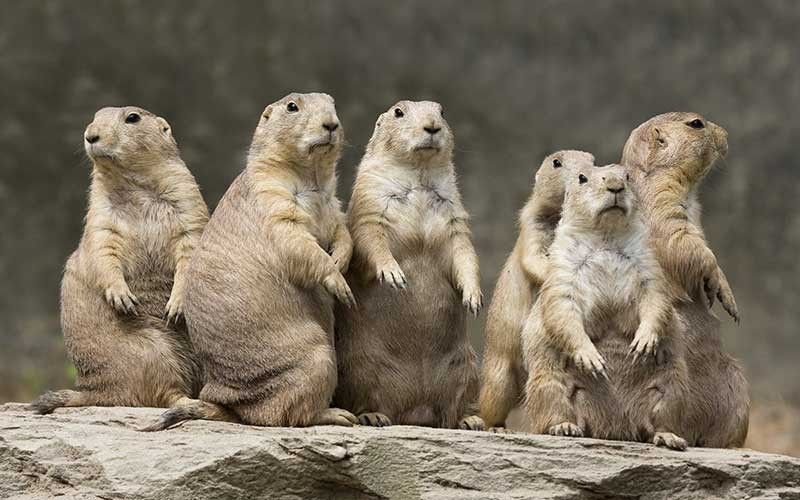Conservation of an emblematic species: the golden eagle
The golden eagle (Aquila chrysaetos), with its distinctive carriage and deep gaze, is an emblematic species of Mexico. It first appeared as a national symbol when Ignacio Allende had the "twin flags" made, the standard of the insurgents.

The golden eagle is a species that lives in the northern hemisphere of our planet and is one of the largest birds of prey in North America. The Aquila chrysaetos, as it is scientifically known, can reach up to one meter in height and 2.3 meters from wingtip to wingtip. It can reach a speed of 250 km/h when swooping down on its prey and its vision is considered to be eight times more powerful than that of a human.
Throughout history, this species has been an emblem for many cultures around the world. In Mexico, it has had great significance since pre-Hispanic times, and its image has been captured in the Mexican national coat of arms. It can be found in the north of the country, in the Baja California Peninsula, and throughout the central Altiplano. During the past few years, however, golden eagle sightings have increased in other states in the south of the country.
Biologically, the golden eagle is a predator at the top of the food chain and, therefore, regulates the populations of mammals on which it feeds, such as rabbits, hares, weasels, and skunks. It is also considered an "umbrella" or "umbrella" species, i.e., by protecting it, it affects the conservation of other species and/or their habitat, as is the case with the Perrito llanero in some regions of central Mexico. Many species that serve as food for the eagles coexist in the colonies of the dogs, and this favors the conservation of the biodiversity of the semi-arid zones of the north and center of Mexico. Also, using the golden eagle as an emblematic species helps in the search for protection for areas of great importance such as the semi-desert of Zacatecas.
Threats to the golden eagle
The golden eagle is considered a "threatened" species in NOM-059-SEMARNAT-2010, due to both its reduced population and the threats it faces. Although one of the main causes of the decline in golden eagle populations in Mexico is the plundering of eggs and chicks, the most significant cause is habitat loss due to changes in land use, mainly for agriculture. The desert ecosystems and grasslands of the Mexican highlands, where the species is distributed, have been affected by human activities. This has resulted in habitat loss and fragmentation, and the landscape has been transformed into a mosaic of natural habitats, rural and urban populations, and agricultural and cattle-raising areas. These changes have resulted in an overall loss of diversity that affects species such as the golden eagle, which requires large areas for survival and hunting, suitable sites for nest construction, and, above all, an abundance of prey to ensure its survival and reproductive success.
Actions for the conservation of the golden eagle
So far, at the national level, conservation efforts for the golden eagle have focused on conserving nesting sites and protecting the active nest during the breeding period. However, actions for the conservation of a golden eagle nesting territory are a problem of greater complexity, which must contemplate different criteria and scales. It is necessary to ensure four elements: 1. the protection of the active nest (where the eagle lays and incubates eggs and raises the young), 2. the existence of available sites to build alternative nests (the eagle pair builds them but does not use them to reproduce), 3. the good management of hunting areas, and 4. the abundance of prey species that ensure the survival of the adults and the young. According to studies carried out in other countries, the nesting territory of the golden eagle is estimated to be about 30 km2, so a landscape analysis is required to conserve this species.
Mazapil's territory is one of the best conserved. It is part of the biodiversity conservation areas proposed by the Zacatecas State Government in the land use plan for the Mazapil municipal government. The main threat is the possible construction of a road for exploration of the Peñasquito mine. In this territory, an average of 1.7 eaglets per pair has been recorded in recent years. In the Sierra Fría territory, the vegetation has been affected by agricultural activity, overgrazing, and the cutting of oak forests to produce firewood and charcoal. However, the topographic features provide excellent sites for alternative nest construction.
The territory in the Sierra de Zacatecas is practically immersed in the city. It presents the greatest risk due to changes in land use, proximity to the city, and the installation of a wind farm with 90 wind turbines; this wind farm is not only the main threat to the golden eagle but also other birds and bats. Urban growth and the operation of the wind farm are a significant danger to them because adults and juveniles can be injured by the blades that rotate up to 30 revolutions per minute, depending on the wind speed.

Golden eagle: umbrella species
The conservation of the golden eagle also requires the conservation of its habitat and prey species, even more so when the prey species are in some category of risk, as is the case of the Mexican plains dog, listed in NOM-059 in the category "In danger of extinction". The Mexican plains dog is one of the main food sources for the golden eagle and is considered key to maintaining the functionality of the grassland ecosystems of the Chihuahuan desert because its burrows provide habitat for many species that find refuge and food there, and its activities maintain the health of the ecosystem.
This species was considered extinct in the state of Zacatecas, but since 2005, researchers in the state have been working to recover the colonies of Mexican plains dogfish and the areas of halophytic or saline grasslands, in the sites where they have been historically distributed and which coincide with the nesting territories of the golden eagle. The successful recovery of these species would not have been possible without the active participation of rural communities, who are the owners of the land where the golden eagle nests and its prey live. Most of the towns are ejidos and agrarian communities located within important ecosystems that are in a good state of conservation, so the participation of their inhabitants in the conservation of the golden eagle is extremely important. They have been, generation after generation, the true guardians of the natural capital that allows the presence of these emblematic species.
It is possible to propose viable alternatives that, in addition to generating income, favor ecosystem functionality. Likewise, actions are required that involve the agricultural and livestock sectors, for example, in collaboration with SAGARPA at the federal level, the state secretariats for agricultural development, and landowners in the implementation of good practices, mainly aimed at reducing the effects of agrochemicals and maintaining wildlife corridors.
It has been identified that the indiscriminate and unrestricted use of certain agrochemicals harms eagles, either by consuming poisoned prey, which causes direct poisoning or by altering the quality of the eggs, which are broken when they are laid or incubated. Land-use change for agricultural activities reduces hunting areas when not accompanied by good management practices. These are, at present, the main challenges to guarantee the permanence of the golden eagle, its ecosystem, and the species with which it interacts.
Source: UNAM, By Manuel Valdés Alarcón, Ismael Cruz Molina, Lizardo Cruz Romo, Miguel Ángel Díaz Castorena, Manuel Macías Patiño, Felipe Ramírez Ruíz de Velasco and Patricio Tavizón García.




